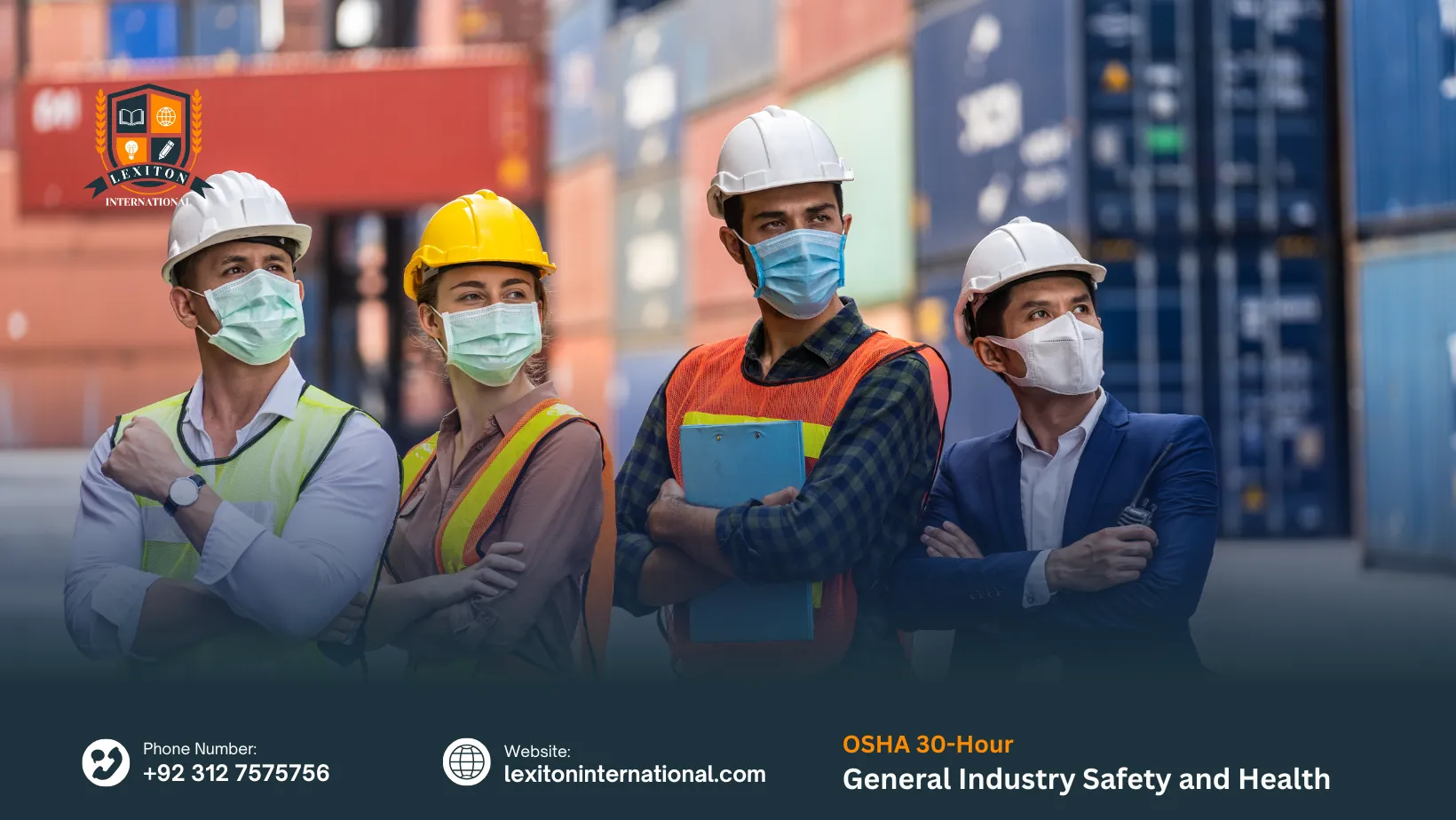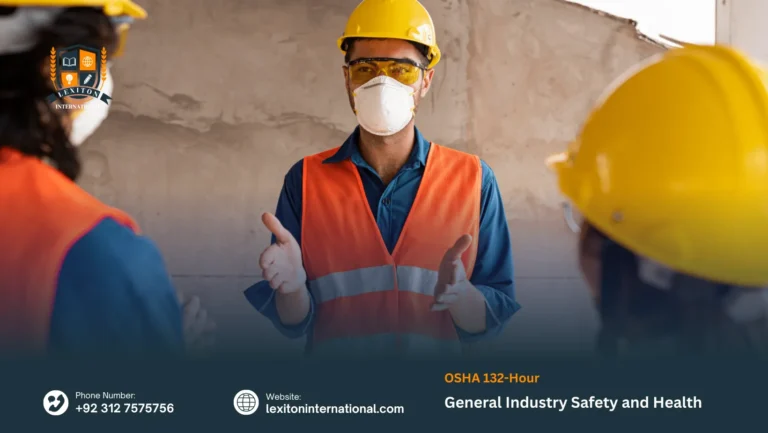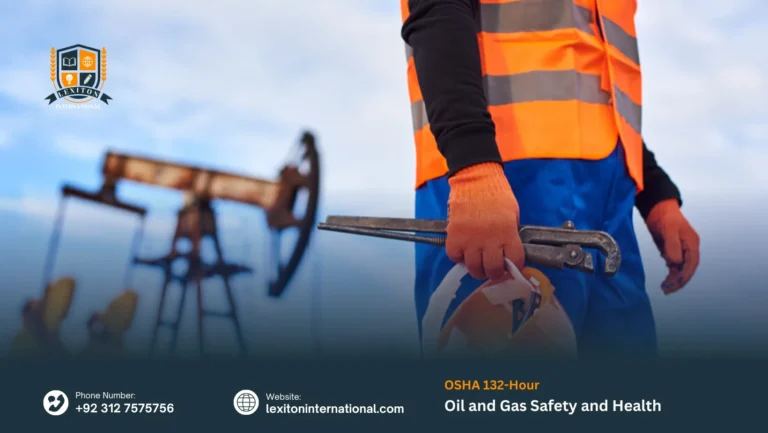The OSHA 30-Hour General Industry Safety and Health course is an advanced training program designed to equip participants with comprehensive knowledge of occupational safety and health practices in general industry settings. This course focuses on promoting a safe and healthy work environment by providing learners with the skills to identify workplace hazards, implement effective safety measures, and comply with federal OSHA regulations. It is suitable for supervisors, safety officers, and employees responsible for maintaining workplace safety.
Throughout the course, learners will explore key topics such as hazard recognition, accident prevention, emergency response planning, hazard communication, ergonomics, and industrial health standards. Emphasis is placed on understanding regulatory requirements, developing safety programs, and fostering a culture of safety awareness within organizations. Participants also gain practical skills in conducting inspections, evaluating risk, and implementing corrective actions to minimize workplace injuries and illnesses.
Upon completion, learners will be prepared to take a leadership role in workplace safety, ensuring compliance with OSHA standards while enhancing overall operational safety. The course empowers participants to create safer work environments, reduce workplace incidents, and improve productivity by integrating effective health and safety practices. This qualification is ideal for safety professionals, supervisors, and managers who are committed to advancing their expertise in occupational safety and health management.
The OSHA 30-Hour General Industry Safety and Health course is designed for professionals at various stages of their careers, including supervisors, safety officers, and health and safety personnel. To ensure participants can successfully engage with the course content, the following entry requirements apply:
- Educational Background:
Participants should have at least a high school diploma or equivalent. A background in occupational health, industrial management, engineering, or related fields is advantageous but not mandatory. - Professional Experience (Recommended):
While not strictly required, prior experience in industrial, manufacturing, or health and safety roles will help learners better understand practical scenarios and case studies. - Basic Safety Knowledge:
Participants should have a general understanding of workplace safety principles, OSHA regulations, and industrial safety protocols. - Language Proficiency:
As the course is delivered in English, learners should be proficient in reading, writing, and comprehension to engage fully with course materials, discussions, and assessments. - Digital Literacy:
Basic computer and internet skills are required for accessing online resources, participating in virtual modules, and submitting assignments. - Commitment to Learning:
Participants should demonstrate strong motivation to develop advanced occupational safety expertise and the ability to apply knowledge effectively in real-world general industry environments.
Mandatory Units
This qualification, the OSHA 30-Hour General Industry Safety and Health, consists of 15 mandatory units.
The OSHA 30-Hour General Industry Safety and Health course equips learners with advanced knowledge and practical skills to identify hazards, manage risks, and ensure compliance with OSHA standards in general industry workplaces. The learning outcomes for each topic are as follows:
Introduction to OSHA
- Understand the purpose, scope, and history of OSHA
- Explain OSHA’s role in workplace safety and compliance
- Identify worker rights and employer responsibilities under OSHA standards
- Recognize OSHA regulations relevant to general industry
- Apply basic OSHA principles to maintain a safe workplace
Hazard Recognition and Risk Assessment
- Identify common workplace hazards in general industry settings
- Conduct basic risk assessments and prioritize hazards
- Develop strategies to control and mitigate workplace risks
- Understand the hierarchy of controls in hazard management
- Promote proactive hazard recognition and prevention
Health Hazards in General Industry
- Recognize biological, chemical, and physical health hazards
- Understand occupational illnesses and exposure limits
- Implement measures to prevent work-related health issues
- Identify workplace practices that minimize health risks
- Promote employee wellness and occupational health awareness
Emergency Preparedness and Response
- Understand the components of an effective emergency plan
- Identify types of workplace emergencies and appropriate responses
- Develop evacuation procedures and emergency communication protocols
- Implement first-aid and incident reporting practices
- Evaluate and improve emergency preparedness programs
Safety Management Systems
- Understand the elements of a safety management system
- Develop policies and procedures to enhance workplace safety
- Monitor and evaluate safety performance indicators
- Promote safety culture and employee engagement
- Integrate safety management into daily operational practices
Electrical Safety
- Identify electrical hazards in the workplace
- Apply safe work practices for electrical systems and equipment
- Understand lockout/tagout procedures for electrical safety
- Implement preventive measures to reduce electrical accidents
- Promote awareness of electrical safety standards and regulations
Machine Guarding and Safety
- Identify hazards associated with machinery and equipment
- Apply machine guarding techniques to prevent injuries
- Implement safe operating procedures for industrial equipment
- Conduct inspections to ensure machinery safety compliance
- Promote employee training and awareness on machine safety
Fall Protection
- Understand types of fall hazards in the workplace
- Apply fall protection systems and personal protective equipment
- Conduct risk assessments for working at heights
- Develop fall prevention policies and emergency procedures
- Promote training and supervision for safe work practices at heights
Material Handling and Ergonomics
- Identify risks associated with manual material handling
- Apply ergonomic principles to reduce musculoskeletal injuries
- Implement safe lifting, pushing, and pulling techniques
- Use mechanical aids and equipment for material handling
- Promote workplace ergonomics and employee education
Hazard Communication
- Understand OSHA hazard communication standards (HazCom)
- Identify chemical hazards and labeling requirements
- Implement safety data sheets (SDS) for hazardous materials
- Train employees on chemical hazard awareness and safe handling
- Maintain compliance with workplace chemical safety regulations
Confined Space Entry
- Recognize hazards associated with confined spaces
- Apply entry permit procedures and safety protocols
- Use monitoring and protective equipment for confined space work
- Implement emergency rescue procedures
- Promote awareness of confined space regulations and compliance
Industrial Hygiene and Environmental Health
- Understand industrial hygiene principles and workplace environmental hazards
- Identify chemical, physical, and biological agents affecting health
- Implement control measures to reduce exposure risks
- Conduct workplace monitoring and health assessments
- Promote occupational health and environmental safety practices
Fire Protection and Prevention
- Identify fire hazards in the workplace
- Apply fire prevention strategies and emergency response measures
- Understand the use of fire extinguishers and suppression systems
- Develop evacuation plans and drills
- Promote employee awareness of fire safety procedures
Workplace Violence and Security
- Recognize types and causes of workplace violence
- Implement preventive measures to minimize risks
- Develop reporting and response procedures for incidents
- Promote employee awareness and security practices
- Evaluate workplace safety programs related to violence prevention
Legal and Ethical Considerations
- Understand the legal framework governing occupational safety
- Identify employer and employee responsibilities under OSHA law
- Recognize ethical considerations in workplace safety decisions
- Apply principles of compliance and accountability
- Promote ethical behavior and integrity in safety management
Ideal Learners for This Course
The OSHA 30-Hour General Industry Safety and Health course is designed for professionals who want to advance their knowledge and skills in occupational safety, hazard management, and regulatory compliance in general industry settings. It is suitable for both new and experienced employees responsible for maintaining workplace safety.
Supervisors and Managers
- Individuals overseeing teams or departments in industrial or manufacturing environments
- Responsible for ensuring safety compliance on-site
- Manage staff training and safety programs
- Monitor workplace hazards and enforce OSHA standards
- Enhance leadership in safety management
Safety Officers and Health Professionals
- Occupational health and safety officers seeking advanced knowledge
- Safety coordinators in factories, warehouses, or production facilities
- Professionals responsible for implementing risk assessments and control measures
- Monitor incident reporting and compliance audits
- Develop strategies to prevent workplace injuries and illnesses
Industrial and Manufacturing Employees
- Workers aiming to understand OSHA regulations and safe work practices
- Employees handling machinery, chemicals, or materials in general industry
- Staff involved in daily operations requiring awareness of hazards
- Individuals seeking to reduce workplace incidents and improve safety culture
- Learn practical methods to manage risks and respond to emergencies
Aspiring Safety Leaders
- Individuals planning to move into supervisory or managerial safety roles
- Learners aiming to gain credentials that demonstrate expertise in OSHA compliance
- Professionals seeking to lead safety initiatives and develop safety programs
- Those interested in creating a culture of proactive workplace safety
- Enhance career prospects with recognized safety qualifications
Career Changers and New Entrants
- Individuals entering industrial, manufacturing, or general industry fields
- Learners seeking foundational and advanced safety knowledge for employability
- Professionals transitioning from other sectors into occupational safety roles
- Gain confidence in hazard recognition and risk mitigation
- Prepare for certification and further career advancement in safety
Committed Learners and Safety Advocates
- Individuals motivated to apply safety principles in real-world environments
- Learners dedicated to continuous professional development in occupational health and safety
- Staff aiming to promote awareness of safe practices within teams
- Those seeking to contribute to compliance, risk reduction, and workplace wellbeing
- Build a strong foundation for long-term career growth in safety management
Completing the OSHA 30-Hour General Industry Safety and Health course opens multiple pathways for career advancement, professional development, and further academic study in occupational safety and health. Key progression opportunities include:
Advanced Safety Certifications
- Pursue OSHA 500 Trainer Course to become a certified OSHA instructor
- Enroll in OSHA 510 Occupational Safety and Health Standards courses
- Obtain NEBOSH or similar internationally recognized safety certifications
- Specialize in hazard-specific certifications (e.g., electrical, fire, confined spaces)
- Enhance credentials for leadership roles in safety management
Supervisory and Managerial Roles
- Advance to positions such as Safety Supervisor, Health and Safety Officer, or Safety Manager
- Lead workplace safety programs and initiatives
- Oversee compliance with OSHA standards and internal safety policies
- Mentor and train junior staff on safety practices
- Manage incident investigations and risk assessments
Industry-Specific Safety Roles
- Work in manufacturing, construction, warehousing, or industrial facilities
- Implement industry-specific safety standards and protocols
- Conduct inspections, audits, and hazard evaluations
- Support accident prevention and emergency preparedness programs
- Build expertise in sector-specific occupational hazards
Leadership and Strategic Safety Management
- Develop and implement organizational safety policies and culture
- Conduct safety audits and compliance reviews at multiple sites
- Lead cross-functional safety committees and initiatives
- Manage safety budgets and resource allocation
- Influence corporate decision-making regarding workplace health and safety
Emergency Response and Risk Management
- Specialize in emergency preparedness, fire safety, and crisis management
- Develop risk mitigation plans for complex industrial operations
- Train employees in emergency procedures and hazard response
- Contribute to organizational resilience and continuity planning
- Apply advanced risk assessment techniques in operational settings
Further Academic and Professional Development
- Progress to higher-level occupational safety qualifications (Level 4–6 diplomas or degrees)
- Participate in workshops, seminars, and continuing professional development programs
- Explore specialized areas such as industrial hygiene, ergonomics, or environmental health
- Enhance knowledge for international career opportunities
- Stay updated with evolving OSHA regulations and industry standards
Consultancy and Advisory Roles
- Provide expert guidance on occupational safety and regulatory compliance
- Work as a freelance safety consultant for multiple organizations
- Assist companies in developing safety programs and training modules
- Conduct audits and assessments for risk management and regulatory compliance
- Influence safety policies at organizational or industry levels
Curious About This Course?







